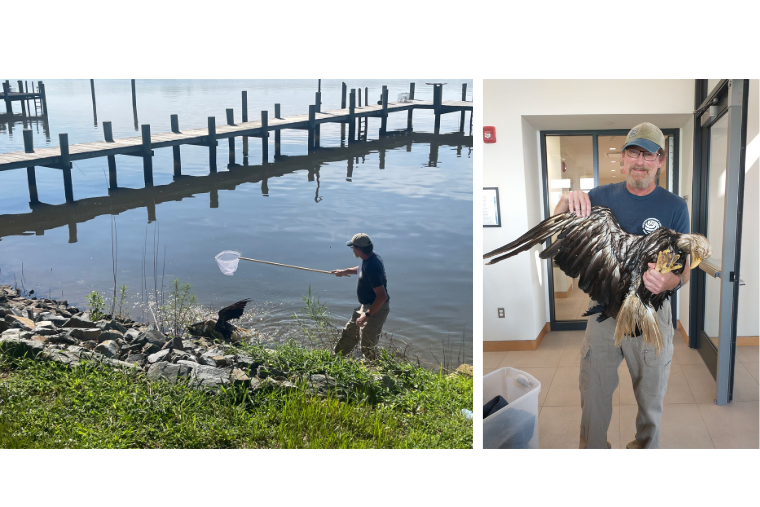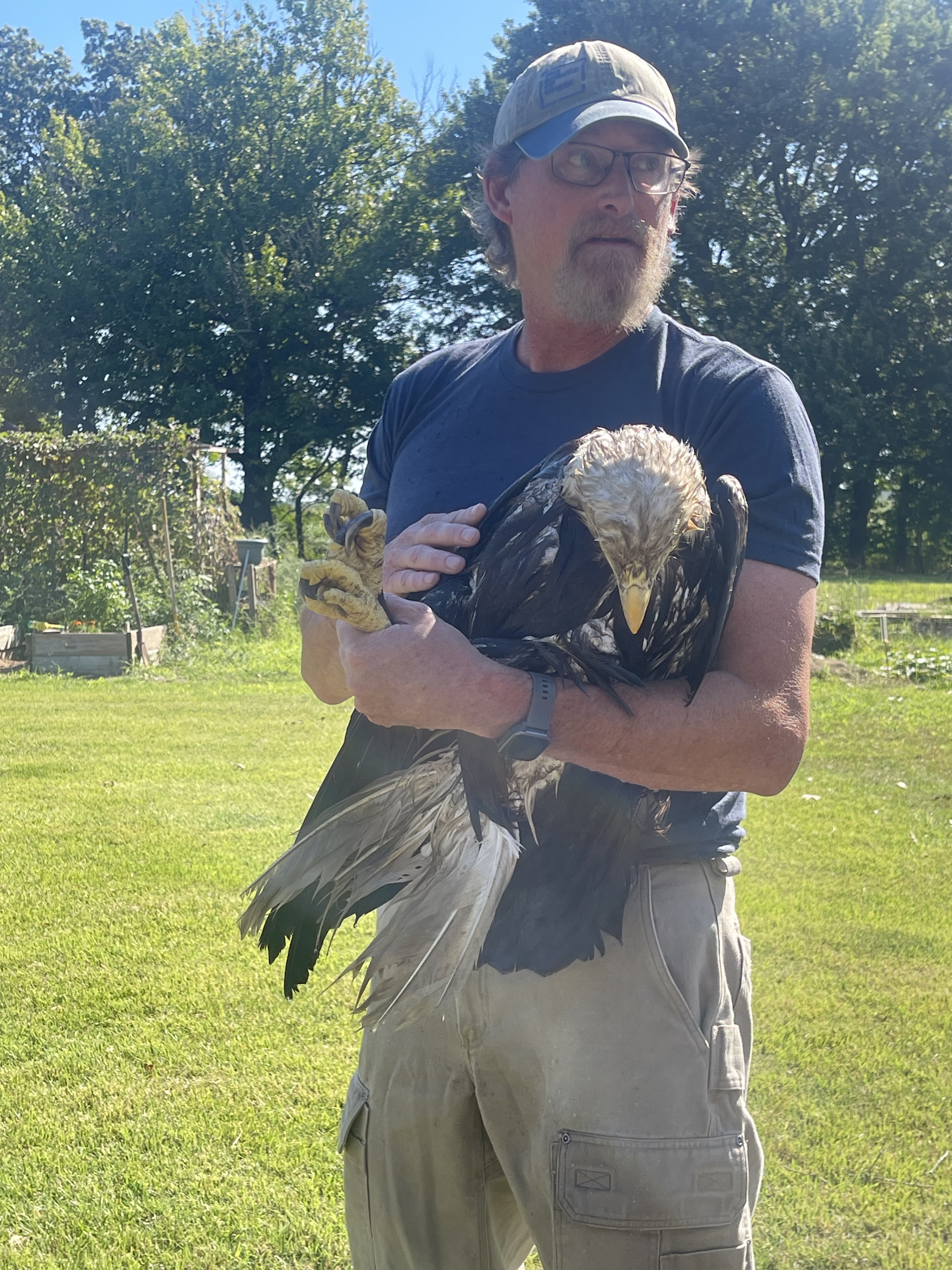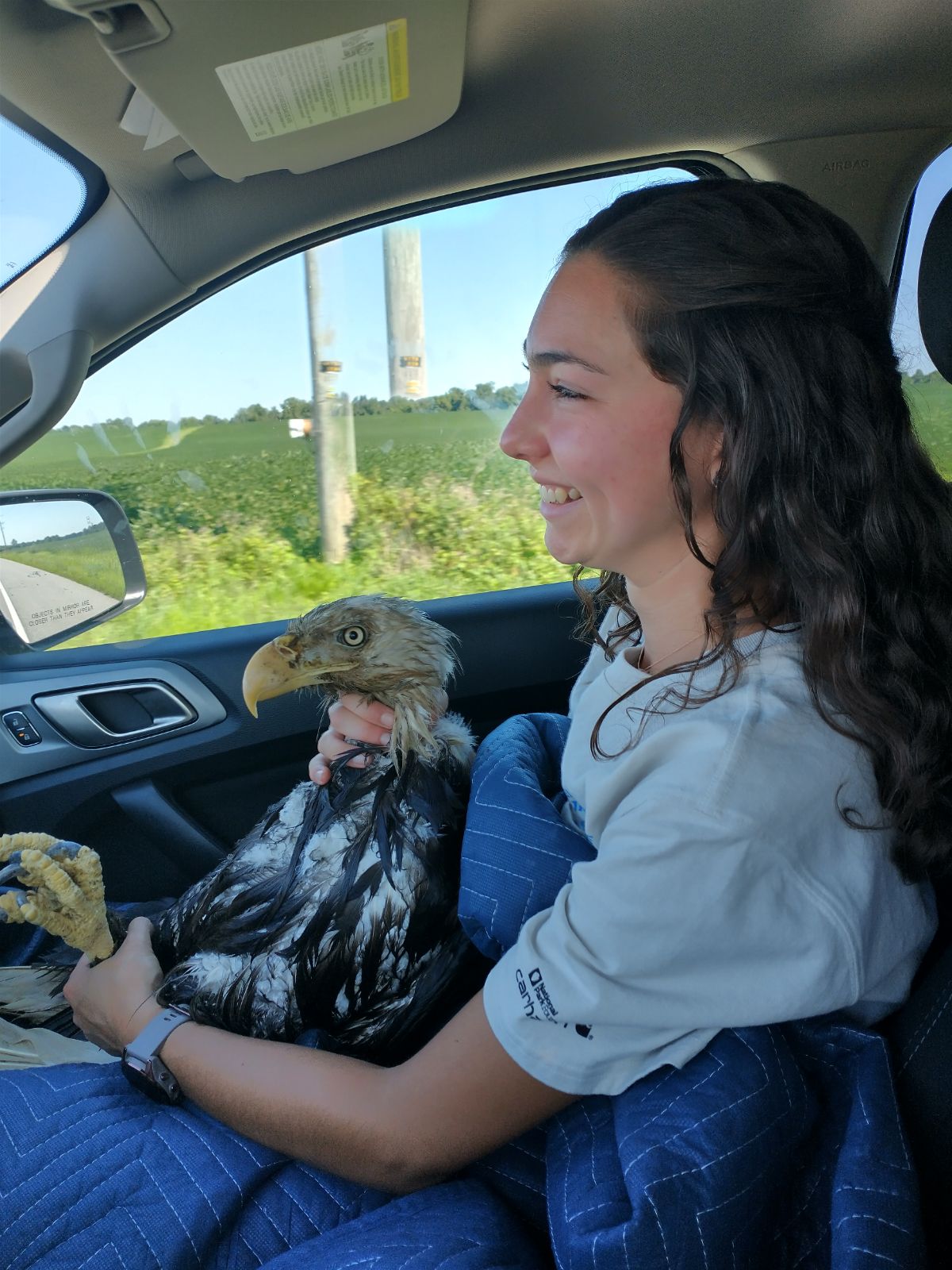Injured Bald Eagle Rescued from Chester River
Dedicated team at the Center for Environment & Society get the bird safely to rehabilitation facility.

Monday morning, staff from Washington College's Center for Environment & Society (CES) made a daring rescue of an adult bald eagle from the banks of the Chester River on Maryland's Eastern Shore. Director of CES' River and Field Campus, David Kramar, noticed a post on Facebook asking someone for help with an eagle who seemed to have an injured wing and foot and was hobbling around on a dock over the river. Kramar, who is an experienced avian rescuer, responded to the post and offered up his services. Quickly, he and two other CES staffers hopped in a truck and made their way over to where the bird had been sighted.
After the bird tried to fly across the river and crashed into the water, they drove across the bridge and requested access to a resident's backyard to obtain the raptor who swum onto the opposite shore. Kramar was able to approach the bird swiftly, pin him gently and secure the animal's feet before lifting him up. The bird rode shotgun in CES staffer Emma Cease's lap on the way back to CES headquarters where he was inspected and placed in a crate until he could be picked up by TriState Bird Rescue.
 Kramar, who has years of experience rescuing, researching, and working with bald eagles
and other birds and is a listed rescuer with Tristate Bird Rescue and Moon Owl Raptor
Center, urges people in the Chesapeake Bay region to call in the professionals if
they spot an eagle or other large bird who is need of help.
Kramar, who has years of experience rescuing, researching, and working with bald eagles
and other birds and is a listed rescuer with Tristate Bird Rescue and Moon Owl Raptor
Center, urges people in the Chesapeake Bay region to call in the professionals if
they spot an eagle or other large bird who is need of help.
“You can look up a few local rehabbers, and you can always call the Department of
Natural Resources for help. If you don't have handling experience DON'T approach the
bird,” cautions Kramar. “Bald Eagles have three sharp ends, if they can get you with
one, they will. The thing is to get the bird safely restrained. We want to limit injury
to people as well as the bird.” 
A Dedicated History to Avian Protection and Research
Washington College's Center for Environment & Society is no stranger to bird encounters. In the last year, staff at its Foreman's Branch Bird Observatory have caught, identified, banded, and released over 13,000 birds representing more than 125 species including herons, owls, ospreys, hawks, orioles, woodpeckers, hummingbirds, blackbirds, wrens, mockingbirds, bluebirds, and robins
Located on the Chester River, a few miles north of Chestertown, MD, the Bird Observatory is nestled in a waterfront refuge on Washington College's River and Field Campus (RAFC). The land serves as an important stopover habitat for shorebirds and is home to thousands of migrating and wintering ducks and geese each year. Washington College's riverfront campus also encompasses several acres of experimental grasslands and valuable scrub-shrub habitats where summer breeding research is conducted on several species native to the area.
The College's RAFC encompasses nearly 5,000 acres of diverse ecological communities just minutes from its main campus in Chestertown, including 2.5 miles of Chester River shoreline, a 90-acre freshwater lake, multiple streams and seasonal wetlands, 1,200 acres of forest, 3,000 acres of agricultural fields, and 228 acres of restored native prairie with natural grasses that have allowed northern bobwhite quail to flourish. The property also features 50 acres of managed, successional habitat for one of the most active bird-banding stations on the East Coast, handling approximately 14,000 birds a year.
To learn more about the many opportunities CES affords students to solve the most pressing issues facing the future of our planet and its people through experiential learning, community and civic engagement, and research, head to their webpage.
- Dominique Ellis Falcon